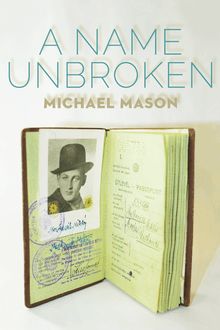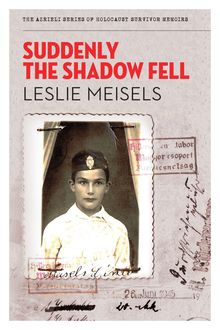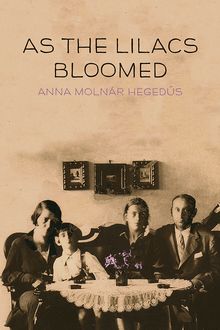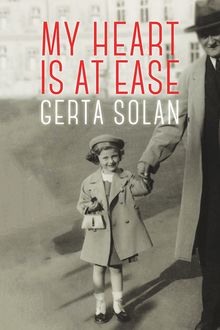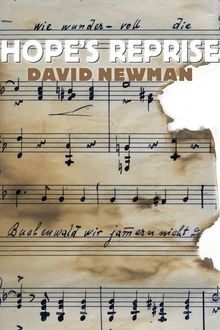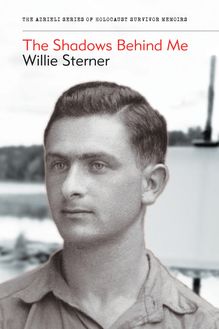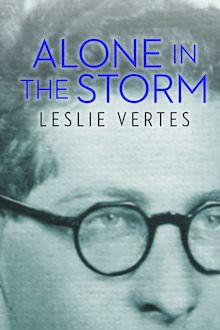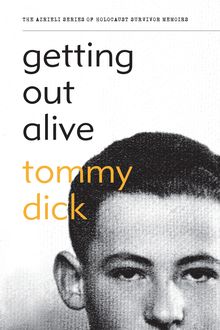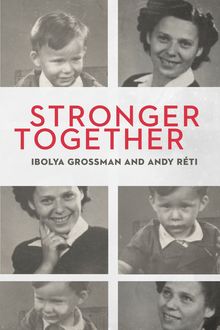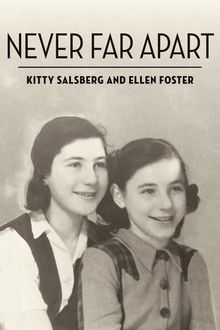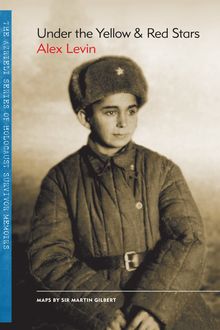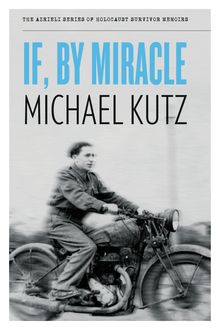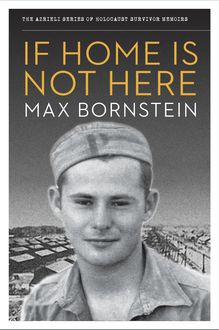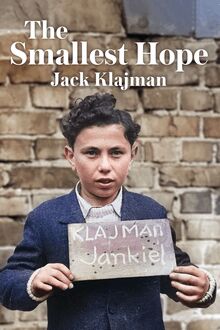Tenuous Threads / One of the Lucky Ones , livre ebook
151
pages
English
Ebooks
2012
Vous pourrez modifier la taille du texte de cet ouvrage
Obtenez un accès à la bibliothèque pour le consulter en ligne En savoir plus
Découvre YouScribe en t'inscrivant gratuitement
Découvre YouScribe en t'inscrivant gratuitement
151
pages
English
Ebooks
2012
Vous pourrez modifier la taille du texte de cet ouvrage
Obtenez un accès à la bibliothèque pour le consulter en ligne En savoir plus
Publié par
Date de parution
01 septembre 2012
Nombre de lectures
1
EAN13
9781897470718
Langue
English
Publié par
Date de parution
01 septembre 2012
Nombre de lectures
1
EAN13
9781897470718
Langue
English
Tenuous Threads
Judy Abrams
One of the Lucky Ones
Eva Felsenburg Marx
The Azrieli Series of Holocaust Survivor Memoirs
INTERNATIONAL ADVISORY COUNCIL
Doris Bergen, Chancellor Rose and Ray Wolfe Chair in Holocaust Studies, University of Toronto
Sara R. Horowitz, Director of the Israel and Golda Koschitzky Centre for Jewish Studies, York University
Nechama Tec, Professor Emerita of Sociology, University of Connecticut
Avner Shalev, Chairman of the Yad Vashem Directorate, Jerusalem
Naomi Azrieli, Publisher
Andrea Knight, Managing Editor
Arielle Berger, Editor
Mia Spiro, Editor
Elizabeth Lasserre, Senior Editor, French-Language Editions
Aurélien Bonin, Assistant Editor / Researcher, French-Language Editions
Elin Beaumont, Outreach and Communications Manager
Tim MacKay, Program Assistant
Susan Roitman, Executive Coordinator
Mary Arvanitakis, Executive Coordinator
Mark Goldstein, Art Director
Nicolas Côté, Layout, French-Language Editions
Maps by François Blanc
Contents
The Azrieli Series of Holocaust Survivor Memoirs
Series Preface: In their own words...
About the Glossary
Introduction
Tenuous Threads
Dedication
Chestnut Boulevard
The Saving Beads
My First and Only Christmas
The Saving Cry
Afterward
Dragons and Departures
Escape
New Adjustments
Dead Man’s Suit
My Mother’s Secrets
One of the Lucky Ones
Dedication
Brno
My First Escape
In Hiding
After the War
Leaving Europe
Life’s Journey
Epilogue
Glossary
Photographs
Judy Abrams
Eva Felsenburg Marx
Copyright
About the Azrieli Foundation
Also Available
Series Preface: In their own words...
In telling these stories, the writers have liberated themselves. For so many years we did not speak about it, even when we became free people living in a free society. Now, when at last we are writing about what happened to us in this dark period of history, knowing that our stories will be read and live on, it is possible for us to feel truly free. These unique historical documents put a face on what was lost, and allow readers to grasp the enormity of what happened to six million Jews – one story at a time.
David J. Azrieli , C.M., C.Q., M.Arch Holocaust survivor and founder, The Azrieli Foundation
Since the end of World War II , over 30,000 Jewish Holocaust survivors have immigrated to Canada. Who they are, where they came from, what they experienced and how they built new lives for themselves and their families are important parts of our Canadian heritage. The Azrieli Foundation’s Holocaust Survivor Memoirs Program was established to preserve and share the memoirs written by those who survived the twentieth-century Nazi genocide of the Jews of Europe and later made their way to Canada. The program is guided by the conviction that each survivor of the Holocaust has a remarkable story to tell, and that such stories play an important role in education about tolerance and diversity.
Millions of individual stories are lost to us forever. By preserving the stories written by survivors and making them widely available to a broad audience, the Azrieli Foundation’s Holocaust Survivor Memoirs Program seeks to sustain the memory of all those who perished at the hands of hatred, abetted by indifference and apathy. The personal accounts of those who survived against all odds are as different as the people who wrote them, but all demonstrate the courage, strength, wit and luck that it took to prevail and survive in such terrible adversity. The memoirs are also moving tributes to people – strangers and friends – who risked their lives to help others, and who, through acts of kindness and decency in the darkest of moments, frequently helped the persecuted maintain faith in humanity and courage to endure. These accounts offer inspiration to all, as does the survivors’ desire to share their experiences so that new generations can learn from them.
The Holocaust Survivor Memoirs Program collects, archives and publishes these distinctive records and the print editions are available free of charge to libraries, educational institutions and Holocaust- education programs across Canada, and at Azrieli Foundation educational events. They are also available for sale to the general public at bookstores. All editions of the books are available for free download on our web site at: www.azrielifoundation.org .
The Azrieli Foundation would like to express appreciation to the following people for their invaluable efforts in producing this series: Simone Abrahamson, Florence Buathier, Darrel Dickson (Maracle Press), Sir Martin Gilbert, Stan Greenspan, Arnaud Regnaud, Sylwia Szymańska-Smolkin, Keaton Taylor, Robert Jan van Pelt, Lise Viens, Margie Wolfe and Emma Rodgers of Second Story Press, and Piotr Wróbel.
About the Glossary
The memoirs in this volume contain a number of terms, concepts and historical references that may be unfamiliar to the reader. For information on major organizations; significant historical events and people; geographical locations; religious and cultural terms; and foreign-language words and expressions that will help give context and background to the events described in the text, please see the Glossary .
Introduction
On a sunny spring day in 1944 in Vráble, a small town in the southern region of Slovakia, six-year-old Eva Felsenburg is disguised in peasant clothes by her grandmother and sent on an unusual trip. Her grandparents have hired a man to take her by bicycle to meet her father under a bridge in the nearby town of Nitra to go into hiding. She feels her grandmother’s tears on her cheek as she holds her tight to say goodbye. Eva wonders why she is being sent away. Only one hundred kilometres away in Budapest, Hungary, another seven-year-old little girl by the name of Judit Grünfeld is led by her mother down a tree-lined avenue to the gates of a convent. Her parents have told her that from now on she is no longer Judit, a Jewish girl, but Ilona Papp, a devout Catholic child. Judit feels queasy as her mother turns to leave her with a black-clad nun. She has always been good at make-believe, but this time the game is for real.
Now grandmothers of children the very same age, Eva Felsenburg Marx and Judy Grünfeld Abrams share their stories with us. Each narrative weaves richly depicted images and moments of an inexplicable time in history when young Jewish children were hunted down and the only way to survive was to become invisible. At the start of World War II , there were approximately 1.6 million Jewish children living in occupied Europe. By May 1945, less than 7 per cent of them had survived. Historians estimate that more than one million, and perhaps as many as 1.5 million children were killed by the Nazis over the course of the war. “I was one of the lucky ones,” writes Eva at the opening of her memoir. Indeed she was. An estimated six million Jews were murdered during the Holocaust at the hands of the Nazis, but, as special targets for annihilation, children had a far lower survival rate than adults. Of the children who did survive, most were hidden – sometimes with their parents, but most often without. They were given false identities, hidden in convents, squirrelled away in the apartments of friends or adopted by Christian families; occasionally, they even ended up wandering alone, left to fend for themselves. Yet, even for those children who did manage to escape death, survival meant a rupture in their otherwise normal childhoods and an inheritance of insecurity and fear. Exiled from worlds that ceased to exist and encumbered by the suffering of their parents, the legacy of being “lucky” can often be a burden. For these formerly hidden children, the war and its aftermath can be a painful recollection.
Although they never met, the parallels between Eva and Judy’s experiences as child survivors of the Holocaust are striking. In their narratives, past and present meld together as they struggle to remember and understand the psychological impact of the Holocaust and the complicated inheritance of their escape. As Jewish children in occupied Europe in the early 1940s, they had to be watchful, observant, and often rely on their precociousness and model behaviour to adapt to new situations both during and after the war. Memoirs that highlight young children’s viewpoints of the Holocaust – like these two accounts – are both rare and indispensable from a historical and narrative perspective. They vividly unlock the past, allowing us glimpses into the mysteries of childhood: the taste of freshly baked bread, the smell of chestnut blossoms, the feel of a grandmother’s touch, the sound of laughter, the fickleness of childhood friendships, the cool splash of water on warm summer’s day, the delight in a new coat. At the same time, by inhabiting the naive world of the child, we too enter their universe of incomprehensibility, knowing full well the imminent danger that lurks in the gaps between what the child can and cannot know: relatives who disappear, parents who are sent to concentration camps, homes that are destroyed by bombs. In this sense we are made cognizant of the precarious, and somewhat arbitrary circumstances that keep these children safe.
Of course, the paradox for children growing up during the Holocaust is that they were seldom fully aware of the peril they faced as Jews. Unlike their parents, they lacked the perspective to compare their own reality with a pre-war past and there was a limit to what their young minds could absorb. Both Judy and Eva were not even born when Hitler and the Nazi party rose to power in 1933 and two years later, in September 1935, passed the anti-Jewish edicts that became known as the Nuremberg
